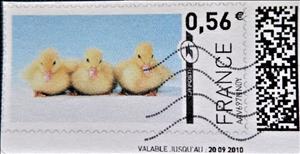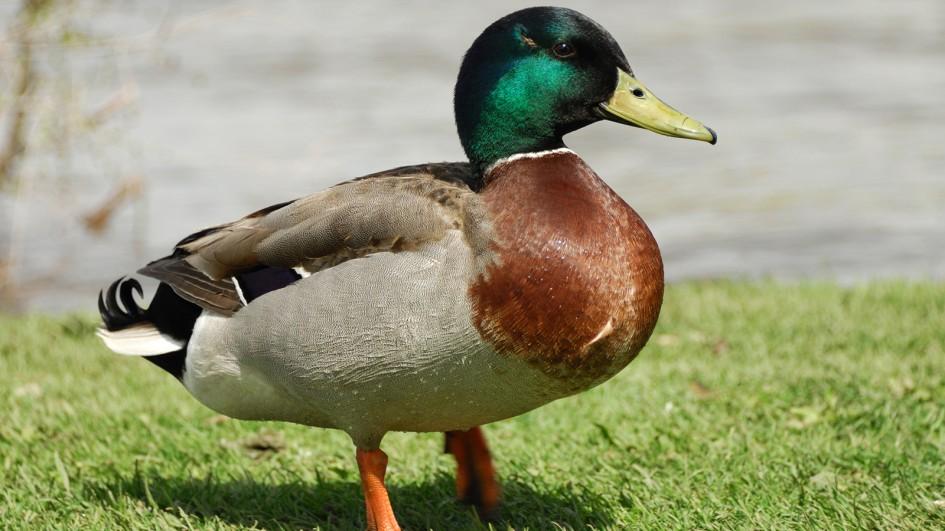Stamp: Three Ducklings (France 2010)
Three Ducklings (France 2010)
01 January (France ) within release MonTimbrEnLigne. Fauna goes into circulation Stamp Three Ducklings face value 0.56 Euro
| Stamp Three Ducklings in catalogues | |
|---|---|
| Colnect codes: | Col: FR-TIM 2010-95 |
Stamp is square format.
Also in the issue MonTimbrEnLigne. Fauna:
- Stamp - Three Ducklings face value 0.56;
- Stamp - Chimpanzee face value 0.58;
- Stamp - Dove face value 0.58;
- Stamp - Grey Squirrel (Sciurus carolinensis) face value 0.56;
- Stamp - Masked Butterfly Fish (Chaetodon semilarvatus) face value 0.56;
- Stamp - Orange Butterfly. Painted Lady. face value 0.58;
- Stamp - Red eyed tree frog (Agalychnis callidryis) face value 0.56;
- Stamp - Sea Gull face value 0.56;
- Stamp - Sea Otter (Enhydra lutris) face value 0.56;
- Stamp - Giant Panda face value 0.58;
|
Data entry completed
46%
|
|
|---|---|
| Stamp Three Ducklings in digits | |
| Country: | France |
| Date: | 2010-01-01 |
| Emission: | Personalized - Official |
| Format: | Stamp |
| Face Value: | 0.56 Euro |
Stamp Three Ducklings it reflects the thematic directions:
Animals are multicellular, eukaryotic organisms of the kingdom Animalia (also called Metazoa). All animals are motile, meaning they can move spontaneously and independently, at some point in their lives. Their body plan eventually becomes fixed as they develop, although some undergo a process of metamorphosis later on in their lives. All animals are heterotrophs: they must ingest other organisms or their products for sustenance.
Birds (Aves), a subgroup of Reptiles, are the last living examples of Dinosaurs. They are a group of endothermic vertebrates, characterised by feathers, toothless beaked jaws, the laying of hard-shelled eggs, a high metabolic rate, a four-chambered heart, and a strong yet lightweight skeleton. Birds live worldwide and range in size from the 5 cm (2 in) bee hummingbird to the 2.75 m (9 ft) ostrich. They rank as the class of tetrapods with the most living species, at approximately ten thousand, with more than half of these being passerines, sometimes known as perching birds. Birds are the closest living relatives of crocodilians.
Duck is the common name for numerous species of waterfowl in the family Anatidae. Ducks are generally smaller and shorter-necked than swans and geese, which are members of the same family. Divided among several subfamilies, they are a form taxon; they do not represent a monophyletic group (the group of all descendants of a single common ancestral species), since swans and geese are not considered ducks. Ducks are mostly aquatic birds, and may be found in both fresh water and sea wate
A juvenile is an individual organism (especially an animal) that has not yet reached its adult form, sexual maturity or size. Juveniles can look very different from the adult form, particularly in colour, and may not fill the same niche as the adult form. In many organisms the juvenile has a different name from the adult (see List of animal names).




